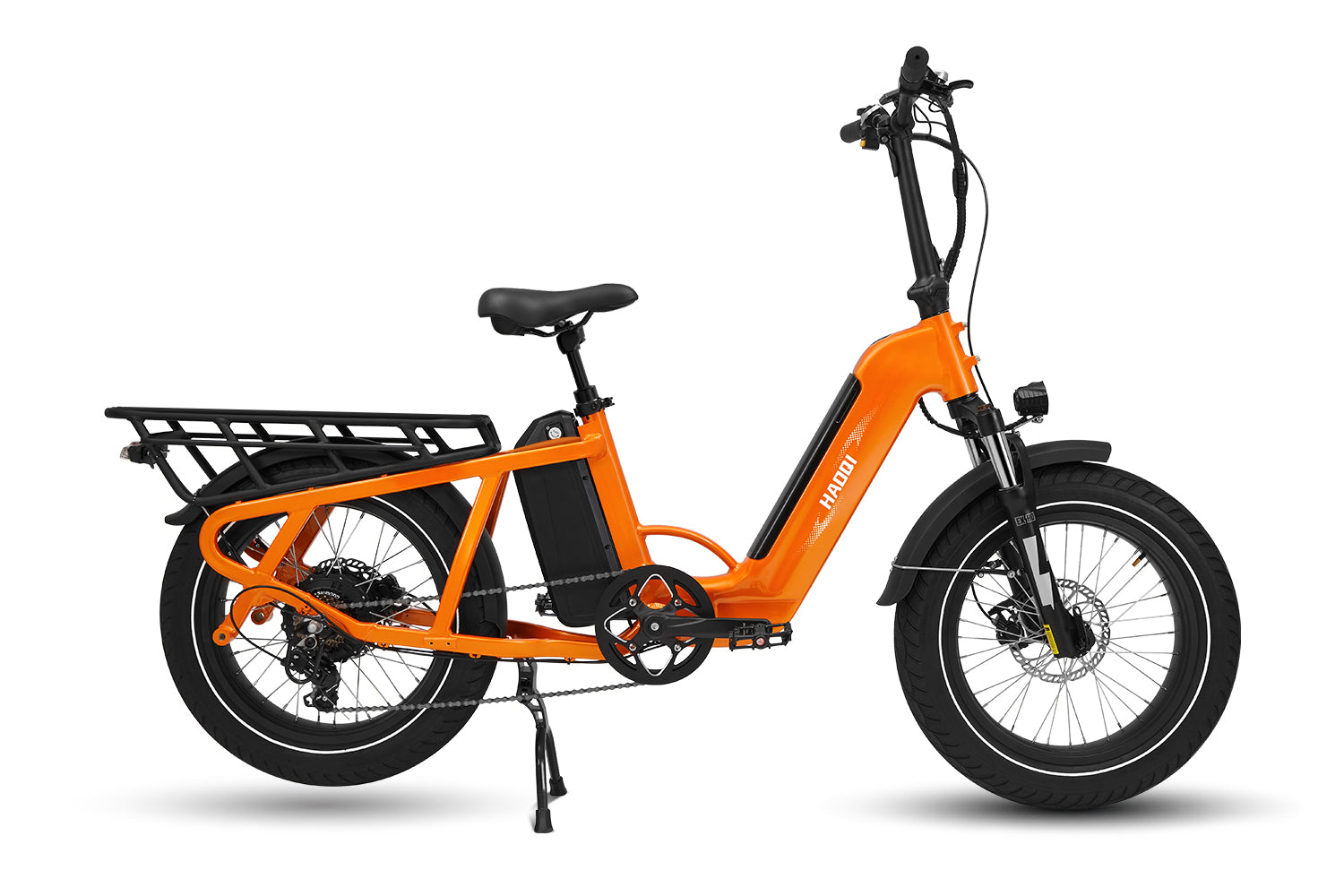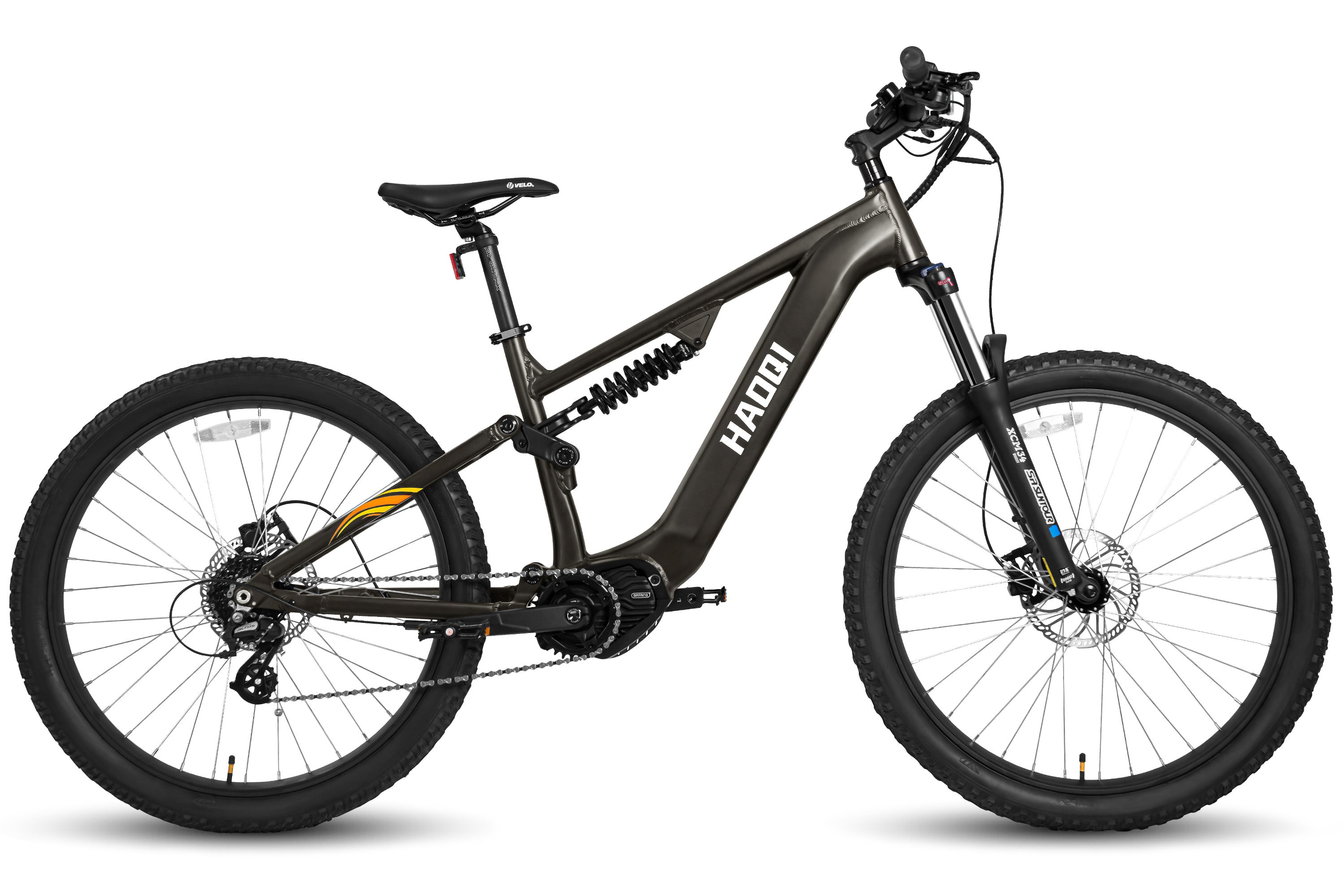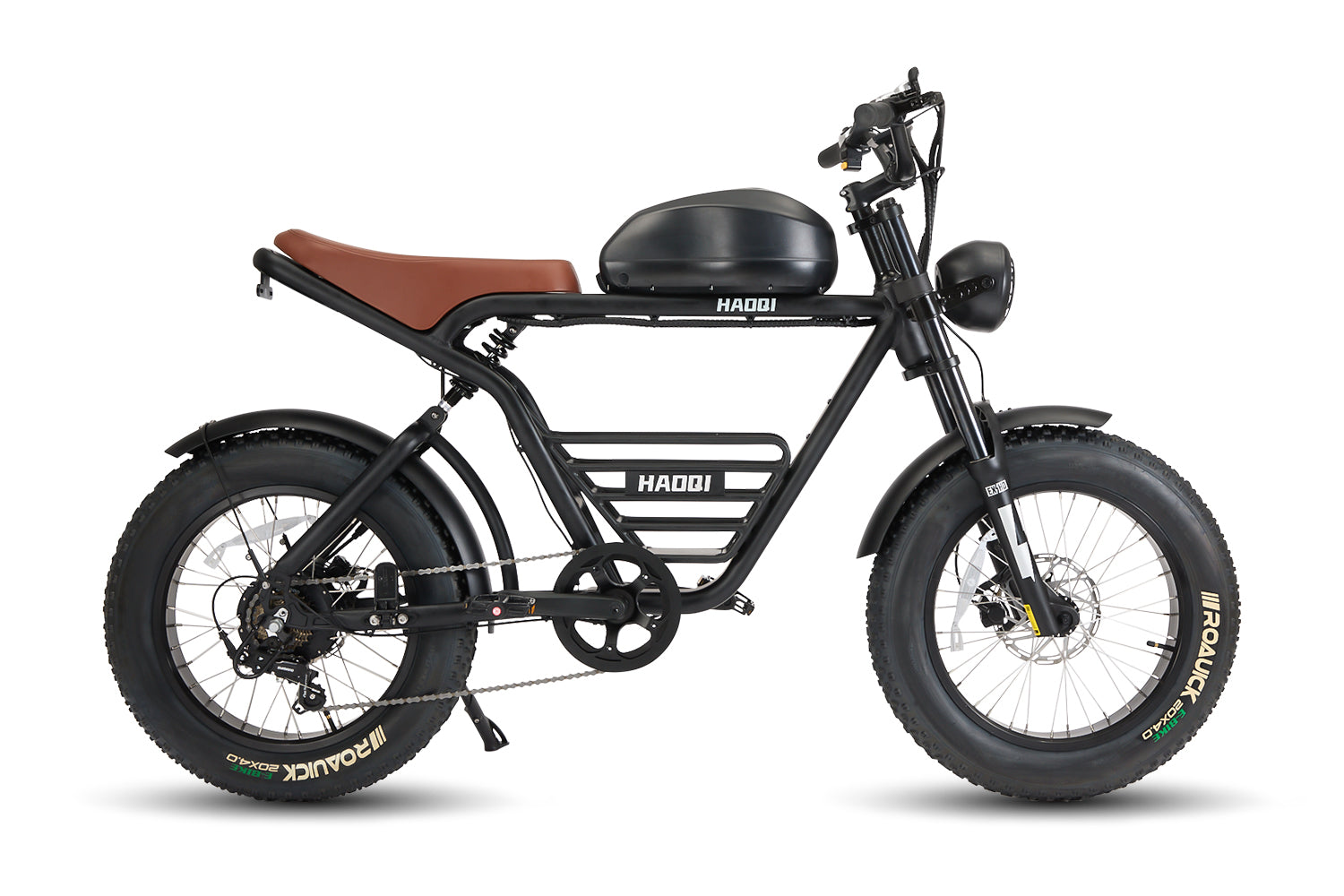Do electric bikes charge when you pedal? The answer is yes for some electric bikes. Those e-bikes use regenerative braking or pedal-powered charging to capture energy while you ride. In this blog, we'll dive into the common charging methods for electric bikes, explain how some models can charge while pedaling or braking, and discuss the pros and cons of these systems. By the end, you'll have a clear understanding of whether electric bikes can charge when you pedal and what it means for your riding experience.

What Are the Common Charging Methods for Electric Bicycles?
Electric bikes rely on a variety of charging methods to maintain battery power and keep the bike running smoothly. Here's a look at the most common charging methods for electric bicycles:
Plug-In Charging
This is the most standard method. It involves connecting the e-bike to a power source using a compatible charger. The time it takes to fully charge the battery depends on its capacity and the charger's specifications, but it typically ranges from 2 to 6 hours. Here's how to do it:
- Locate the Charging Port: Find the charging port on your e-bike, typically located near the battery. It might be covered with a rubber cap for protection.
- Connect the Charger: Plug one end of the charger into a power outlet and the other end into your e-bike's charging port. Ensure the connection is secure.
- Monitor the Charging: Some e-bikes have indicators to show the battery's charging status. Wait until the indicator shows a full charge or the recommended duration has passed.
- Disconnect and Secure: Once fully charged, unplug the charger from the power outlet and then from the e-bike. Secure the charging port cover to protect it from dirt and moisture.
Swappable Batteries
Some e-bikes feature removable batteries that can be easily swapped out. This allows riders to keep a spare, fully charged battery on hand for quick replacement. This method is common among e-bike sharing or rental services. Here's how to use this method:
- Remove the Battery: Follow the e-bike's instructions to remove the battery. This may involve unlocking it with a key or pressing a release button.
- Charge the Battery: Connect the removed battery to the charger and plug it into a power outlet. Monitor the charging status until it's fully charged.
- Swap the Battery: Once fully charged, replace the depleted battery with the newly charged one. Ensure it's securely locked into place before riding.
- Store the Spare Battery: Keep the spare battery in a safe, dry place when not in use to maintain its longevity.
Regenerative Braking
While less common, this method allows the e-bike to recharge its battery by converting kinetic energy into electrical energy when braking or coasting downhill. It adds a small amount of charge back to the battery and is often used to supplement plug-in charging. However, it is not typically enough to replace traditional charging. Here's how it works:
- Activate Regenerative Braking: Depending on your e-bike model, this feature might be automatic or require activation through a control panel or specific riding mode.
- Brake or Coast: When riding, regenerative braking captures energy during braking or coasting downhill, converting it into electrical energy to recharge the battery.
- Monitor the Charge: While regenerative braking can boost your battery's charge, it's usually not enough to replace traditional charging. Use it as a supplement rather than a primary charging method.
Each of these charging methods offers different benefits and limitations, depending on the e-bike's design, the rider's needs, and the infrastructure available.

How Do Electric Bicycles Charge While Pedaling or Braking?
Do ebikes charge when you pedal? The answer is yes for some electric bikes with regenerative charging. Electric bicycles can charge while pedaling or braking through a process called regenerative braking. When you pedal or apply the brakes, some e-bikes are designed to capture the kinetic energy generated and convert it into electrical energy to charge the battery. This system is similar to hybrid cars that use regenerative braking to improve energy efficiency.
Regenerative braking is more common in higher-end e-bike models designed for urban commuting or long-distance travel. However, it typically provides only a small amount of additional charge and is not enough to fully replace traditional charging methods. The energy captured through regenerative braking can help extend your e-bike's range and reduce wear on traditional brakes.
Pros and Cons of Electric Bikes Are Recharged While Riding
Electric bikes that recharge while riding, typically through regenerative braking or pedal-powered systems, offer a unique approach to extending battery life. However, these systems have both advantages and disadvantages.
Pros:
- Extended Range: Regenerative braking can add a small amount of extra charge, allowing you to ride a bit longer between full charges.
- Reduced Brake Wear: Because regenerative braking uses energy from slowing down to recharge the battery, it can reduce wear on traditional brakes.
- Energy Efficiency: Reusing kinetic energy helps maximize battery efficiency and reduces energy waste.
Cons:
- Limited Charge: Regenerative braking typically adds only a small percentage of extra charge, not enough to rely solely on this method.
- Higher Cost: E-bikes with regenerative braking systems are often more expensive due to the additional technology.
- Complexity: The additional components can make these e-bikes more complex to maintain and repair.
Conclusion
Now, the question "Do electric bikes charge when you pedal?" has a simple answer: some do, but it's usually not enough to replace regular charging. Regenerative braking and pedal-generated energy can add a small boost, but plug-in charging remains the primary method to recharge your e-bike. Consider these supplemental features as a bonus, not a replacement for traditional charging. If you're looking for efficiency and range, regenerative systems can help, but they won't eliminate the need to plug in.
FAQ
Will regenerative braking damage the brakes on my two-wheeler?
Regenerative braking can reduce wear on traditional brakes since it uses the bike's kinetic energy to recharge the battery, reducing the need for conventional braking. However, if not designed properly, it could cause additional strain on other components. Always ensure your e-bike's regenerative system is designed for long-term reliability and safety.
Do electric bikes charge going downhill?
Yes, some electric bikes charge going downhill through regenerative braking. As you coast downhill, the regenerative system captures kinetic energy and converts it into electrical energy, charging the battery. While this can extend the e-bike's range, it typically contributes only a small fraction of the total charge.





![HAOQI Antelope 500W Cargo Electric Bike (UL Certified) [electric bike] [HAOQI ebike]](http://haoqiebike.com/cdn/shop/products/haoqi-antelope-cargo-electric-bike-with-dual-battery-haoqiebike-com-1.jpg?v=1753954498&width=1500)
![HAOQI Squirrel Folding Electric Bike (UL Certified) [electric bike] [HAOQI ebike]](http://haoqiebike.com/cdn/shop/files/1_03c67b67-715e-4617-a648-51f108ceb425.jpg?v=1766473332&width=1500)

![HAOQI Eagle Long Range Electric Bicycle (UL Certified) [electric bike] [HAOQI ebike]](http://haoqiebike.com/cdn/shop/files/2_bf7ae46b-aad6-472a-9c14-d56ca3f0feb6.jpg?v=1755142722&width=1500)

![HAOQI Antelope Pro 750W Cargo Electric Bike (UL Certified) [electric bike] [HAOQI ebike]](http://haoqiebike.com/cdn/shop/products/haoqi-antelope-pro-cargo-electric-bike-with-dual-battery-750w-haoqiebike-com-1.jpg?v=1751610204&width=1500)









Leave a comment
All comments are moderated before being published.
This site is protected by hCaptcha and the hCaptcha Privacy Policy and Terms of Service apply.